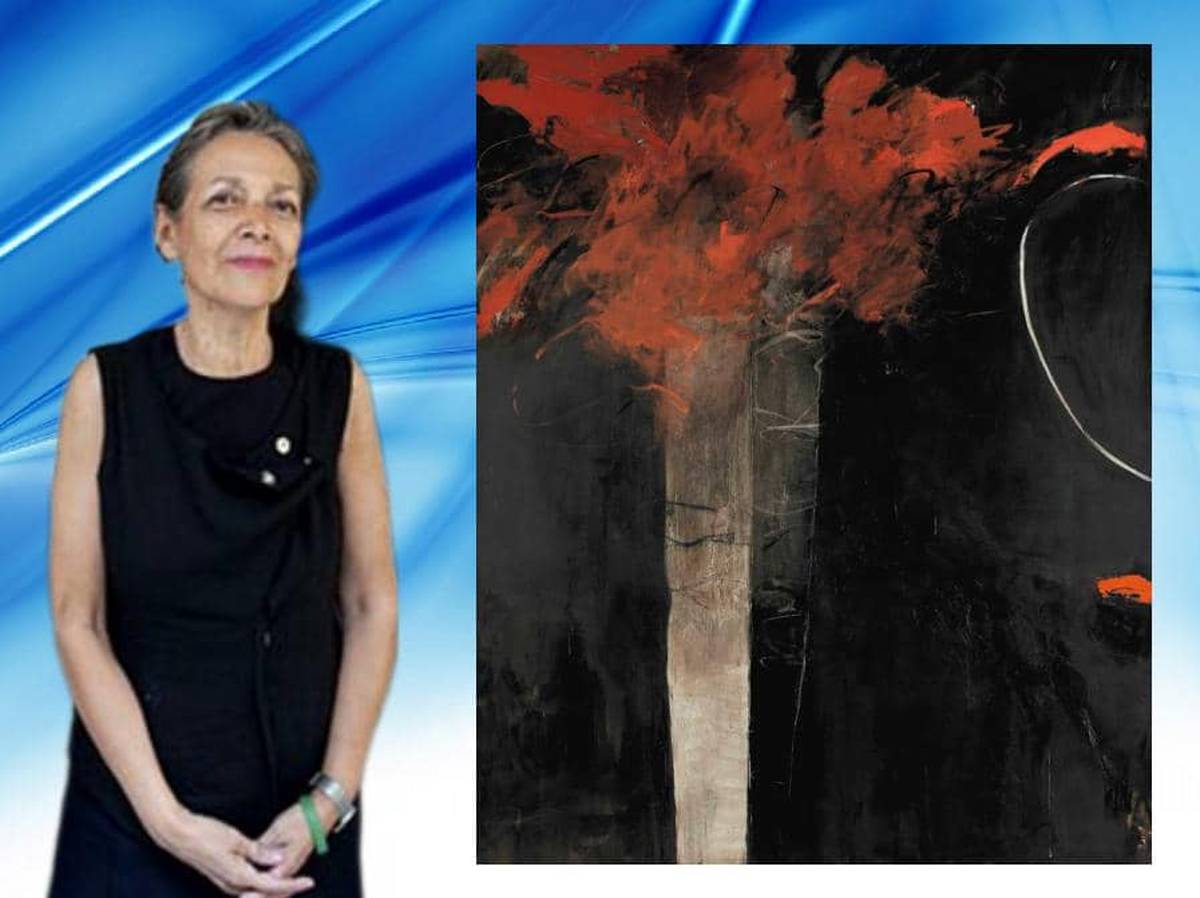
Farideh Lashai’s Tree of Fire in the Raha Gallery Collection: Are We the Ones Burning?
A painting created in 1994—born of Farideh Lashai’s artistic maturity. A contemporary work that offers both abstract and surreal interpretations. A blazing, burning tree—Tree of Fire by Farideh Lashai. But is this truly a tree, or a human figure standing tall, engulfed in flames of thought and turmoil? Or perhaps a person literally burning? Are we the ones burning? It is precisely this ambiguity and metaphorical depth that sets Farideh Lashai apart from her contemporaries—a painter and a writer, a woman of layered expression.
ArtDayMe : The Middle East Raha Gallery Collection, Founded and directed by engineer Mohammadreza Ghaemmaghami, has been actively committed to cultural engagement in the region for over two decades. The collection preserves a rich array of modern and contemporary masterpieces by both Iranian and Arab artists.
Among these is a renowned work by the late Farideh Lashai: an untitled acrylic on canvas (175 × 212 cm), created in 1994 and sold at Christie’s Middle East on March 19, 2014.
Farideh Lashai (1944, Rasht – February 24, 2013, Tehran) was a pioneering Iranian painter, writer, and translator. She was best known for her contemporary abstract paintings. Her body of work includes the acclaimed novel Shal Bamu, along with the translation of two literary works.

Farideh began painting at the age of ten under the tutelage of renowned Iranian portraitist Jafar Petgar. After completing high school, she moved to Germany, graduating from a translation institute in Munich, and later pursued decorative arts studies in Vienna.
Critics regard Lashai’s paintings as a meeting point between tradition and modernity—where echoes of the past find new expression in contemporary art.
Her visual language draws from nature: the earth, trees, plants, and organic forms. Yet she reimagined these elements through a symbolic, interpretive lens—endowing them with new tones, gestures, and poetic resonance.
Her work was exhibited in cities such as Milan, Basel, London, Berkeley, Düsseldorf, Paris, and Tehran, and fetched remarkable results at various international auctions.
One of her most iconic works is this very painting from 1994—created during the peak of her artistic maturity and now held in the Raha Gallery Middle East collection.
At first glance, a spark of red erupts from a large, silent, and suspended darkness.
A vertical form—resembling a tree trunk or perhaps a grey column—emerges from the black void.
Above it, a cloud of red and orange bursts in sudden explosion; a fire untamed, or perhaps an emotional eruption.

Yet this is not merely a tree or an explosion.
In Lashai’s signature style, the painting resists representation and turns into metaphor: perhaps of suppressed femininity, or an inner rebellion.
By the 1990s, Farideh Lashai had moved beyond naturalistic painting into a more abstract and personal visual language. She no longer aimed to depict nature as it is, but rather to capture the feeling of its loss—a nature internalized, forgotten, or unraveling.
In this painting, the vast black negative space acts like a heavy silence.
The leafless tree trunk becomes a symbol of stillness, erosion, or endurance.
The red burst at the top—a form of inner upheaval.
To the right, a thin, translucent white curve floats silently—like a wandering spirit or a quiet observer.
Lashai employed acrylic in this work; the paint appears dry, scratched, and layered.
Blurred, etched lines evoke traces of memory—or scars.
Forms hang between presence and absence.
Nothing here is definitive—everything lies on the edge of collapse or rebirth.
Unlike portrait traditions or literal representation, Lashai’s paintings narrate a feminine voice through absence—not through bodily depiction, but through sensation, silence, and unheard voices.
In this painting, femininity is not visual, but embedded in layers of feeling, resistance, and memory.

“Are we the ones burning?”
That is the question pulsing at the heart of this work.
Is the red explosion an external event—or are we burning from within?
Is this about a tree, or is it us—standing in the dark, igniting from rage, silence, or buried memories?
This painting by Farideh Lashai embodies the visual language of her artistic maturity—a language that transcends familiar forms to voice the silent cries of memory, womanhood, and existence in a turbulent world.
This work is part of the permanent collection of Raha Gallery Middle East.

LEAVE A RELPY